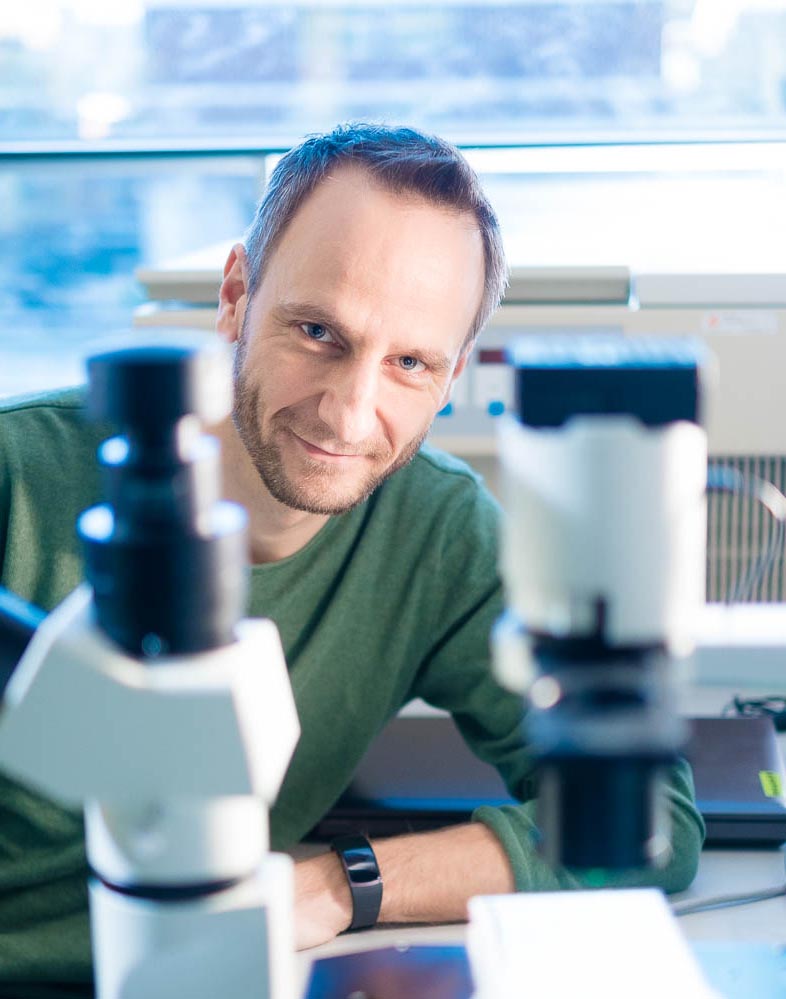How much do we know about the way chemotherapy kills cancer cells? Not enough – or so Oncode Investigator Jacco van Rheenen in collaboration with Oncode Investigators Rene Medema, Emile Voest, Leila Akkari (all NKI) and Anne Rios (Princess Máxima Center) show in their latest work published today in Cancer Cell.
Taxanes, a common type of chemotherapy, turn out to kill cancer cells in a different way than previously thought. This surprising finding can help tomorrow’s physicians optimize the use of taxanes, more effective and with fewer side effects. It also shows the value of collaboration.
Many patients receive taxanes as part of their treatment. But not everybody benefits from the addition of this type of chemotherapy. For example, we barely see an increase in five-year survival rates of patients with triple negative breast cancer: 80% to 83%. And this comes at the cost of potentially debilitating side effects, including hair loss and long-term nerve pain.
“To me, three percent seems a very small percentage, we would like to improve that,” says van Rheenen. “And that requires a greater understanding of the way the medicine works.”
Suspicions versus evidence
For decades, people thought they knew how it worked. You can watch taxanes “freeze” the division of cancer cells on a slide in the lab. These cells can’t divide their DNA among their daughter cells, notice something is wrong, and die.
But suspicions arose that this may not be the full picture. “There had been some rumors among scientists, the expectation that something wasn’t quite right,” van Rheenen explains. “This can happen in science. But being a scientist, I want to prove this, not just suspect it.” So he had his work cut out for him.
Interesting discovery
Ten years ago, he started investigating taxanes again. Together with Oncode Investigator Rene Medema, he witnessed taxanes killing cancer cells in the described way on slides in the lab. But to their surprise they didn’t observe the same effect in cancer cells in mice. The cells did die, but not because they got stuck in DNA division.
After moving his research group to the Netherlands Cancer Institute (NKI) he discovered something else together with medical oncologist Sabine Linn. Patients with many immune cells in their tumors responded much better to the taxanes than other patients. In his experiments, he observed that mice without these immune cells, known as T cells, did not respond to the chemotherapy. “The main question became: why is that?” says van Rheenen.

Poisonous vesicles
After many more experiments, he found his answer. “Taxanes seem to ensure that the immune cells secrete vesicles that are poisonous to cancer cells.” So the chemotherapy appears to activate the immune system to destroy the cancer cells. “And the best part is that these vesicles do kill the cancer cells but don’t harm the healthy cells” he says.
This new knowledge allowed them to provide a surprisingly effective treatment to mice with triple negative breast cancer. “We provided taxanes to the immune cells of these animals outside of their bodies. Then we returned the cells to the mice. I was surprised with the results: I watched the tumors disappear entirely. That’s pretty amazing. This increases the efficacy of taxanes, without as many side effects because you only treat the immune cells outside of the body” explains van Rheenen.
Living organisms
The first results in human cells and tissues in the lab seem promising. “We will be removing immune cells from human tumors, treat them with taxanes, and administer them to organoids – pieces of patient tissue in the lab. If that works well, we can start testing in patients. And most importantly, we want to have a greater understanding on how this works. What do these vesicles contain? How is it possible that these immune cells we return are so powerful? And are we overlooking any potential side effects?”
This study confirms how important it is to figure out how medicines work in living organisms. “Investigating living tissue is much harder and slower than loose cells in the lab,” explains van Rheenen. “That’s why scientists eventually still tend to opt for cells.”
The value of collaboration
The newly published research shows the value of collaboration. It shows not only that providing research and care under the same roof can really make a difference, but that the collaboration between different Oncode Investigators can lead to crucial findings. “Sabine and I work in the same department. On one side, without her I would never have been able to study cells from patients. And on the other, this work was only possible through the collaborative effort of different Oncode groups with expertise on organoids, imaging and T cells” says van Rheenen. Based on this research, they also received Oncode TechDev funding. “We look forward to collaborate with Oncode to apply our findings with the aim to enhance the efficiency of T cell therapies in the future” van Rheenen concludes.
You can read the full publication here.